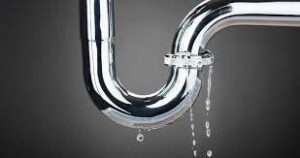 August 2016
August 2016
Tackling the most challenging of water problems
Water problems in high-rise buildings can come from four sources. Effectively dealing with these problems can reduce ongoing maintenance and repair costs. Equipment and furnishings that do not need to be repaired or replaced because of water damage means more reserve fund and operational funds available for other purposes. Savings in insurance expenditures and out-of-pocket resident costs to repair damage from water infiltrations are significant.
Pinhole leaks, the result of constant pressure within pipes, have a range of solutions ranging from costly and disruptive pipe replacement to easily implemented mineral coating of existing pipes. Companies such as LEaC Shield and CPL (Canada Pipe Lining Technologies) offer effective solutions utilized by condo corporations. Faulty appliance connections are one source of numerous easily avoidable water problems. An aging façade that allows water to enter a building through windows, caulking or other areas can also be a significant cause of water problems.
Less common but potentially more serious are internal structural problems resulting from damaged concrete. An indoor swimming pool may be leaking through its concrete, water may drip through a rooftop slab, soffit leaks may allow water to enter an underground parking garage, elevator pits may have active water leaks or external balcony repairs may be necessary to prevent water infiltration.
What these examples have in common is that they can result from aging or poor construction, impact on other internal structures, disrupt the lives of many residents, can be expensive to repair and result in high value insurance claims.
There are newer and more practical solutions for addressing water problems through concrete. One solution, waterproofing by crystallization, eliminates most of the cost and time associated with concrete repair by providing an epoxy coating that prevents water from leaking through. Waterproofing by crystallization is a long term solution in comparison to the traditional injection procedure that property managers seem to be more familiar with.
This procedure is effective in elevator pits for active water leaks through the cold joints where cracks appear.
That swimming pool with water leaking through the concrete to an equipment room or common areas no longer needs to be drained, repaired and refilled over a period of weeks or months. A coating can now be applied to the underside of the concrete to prevent water from leaking through. This same solution can be used to prevent water penetration to an underground garage below or through concrete from a leaking roof. It can be effective in garbage and utility rooms to prevent water penetration to an underground parking garage.
In one condominium there was an active water leak coming from the indoor swimming pool into the boiler room below. The leak was stopped from the negative side (underside) of the pool without draining the pool resulting in no inconvenience to condo owners.
In another scenario, a penthouse suite had water coming from the suspended slab from the rooftop. They were unable to stop the water infiltration after repairing the rooftop. The problem was resolved by applying epoxy from below to waterproof the slab and stop the active leak.
Repairing cracked or damaged concrete offers a practical, economical and faster solution to the traditional approach of replacing damaged concrete. This same solution used proactively in areas most susceptible to water infiltration can increase infrastructure lifespan and delay the need for more costly infrastructure repairs.



